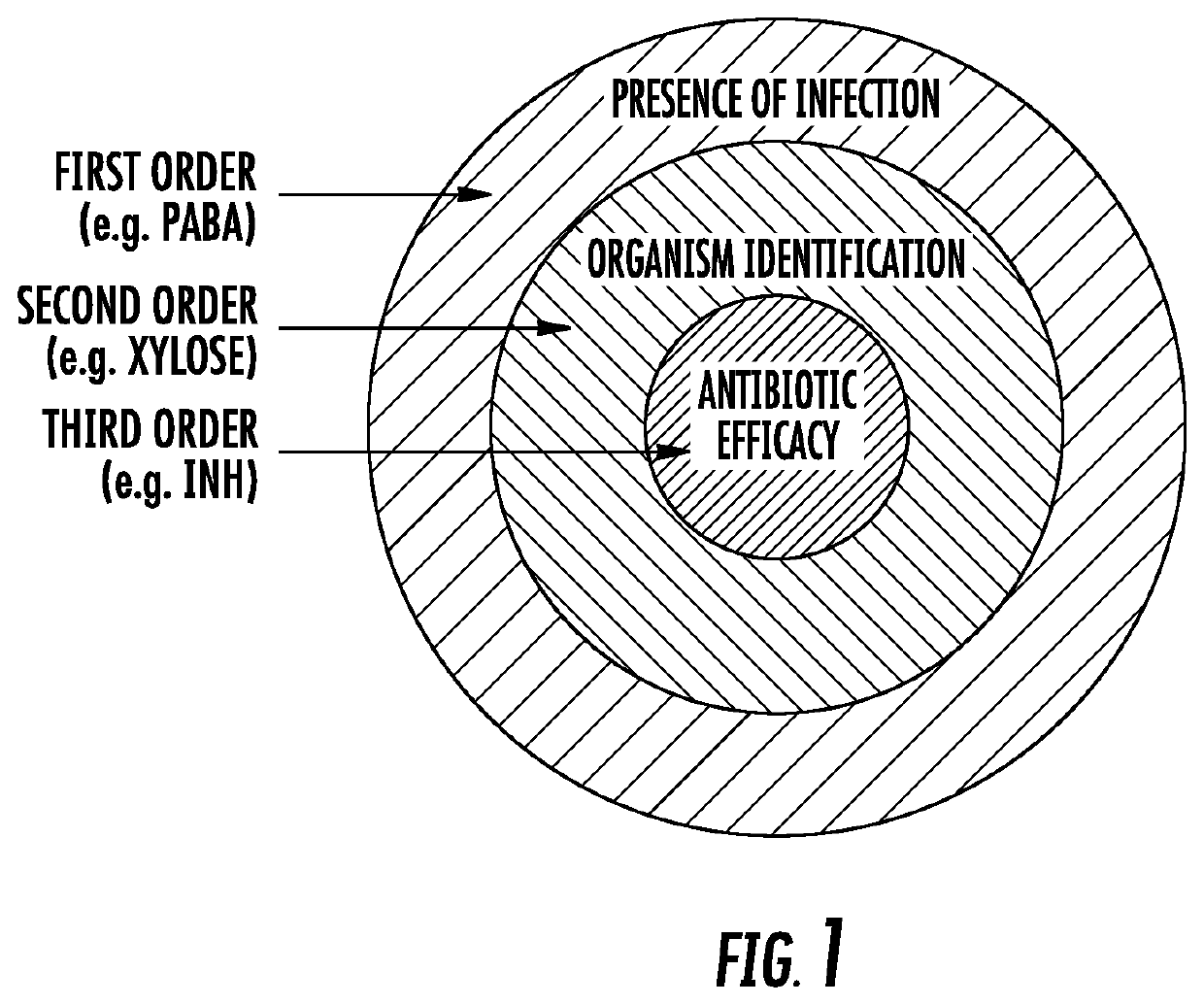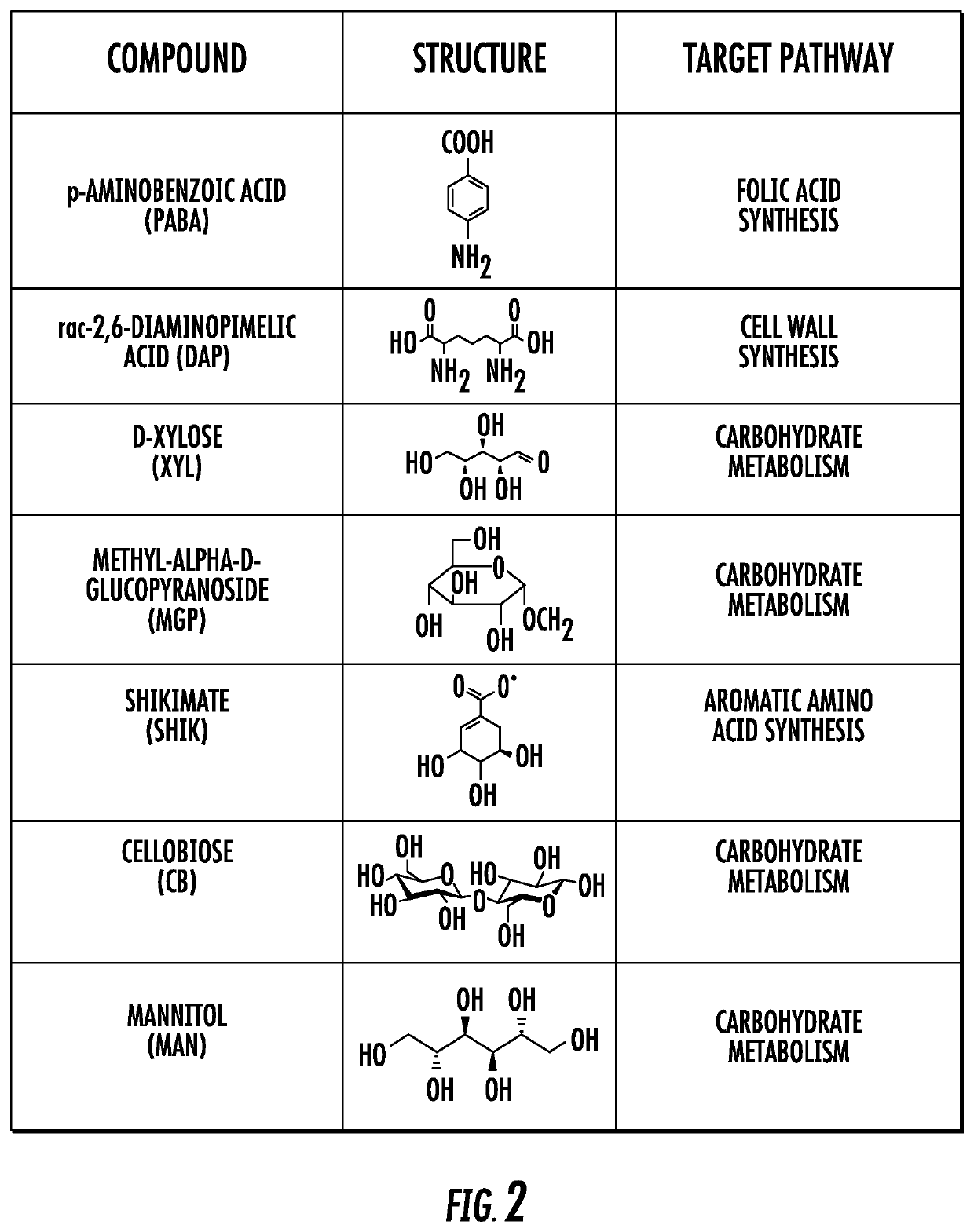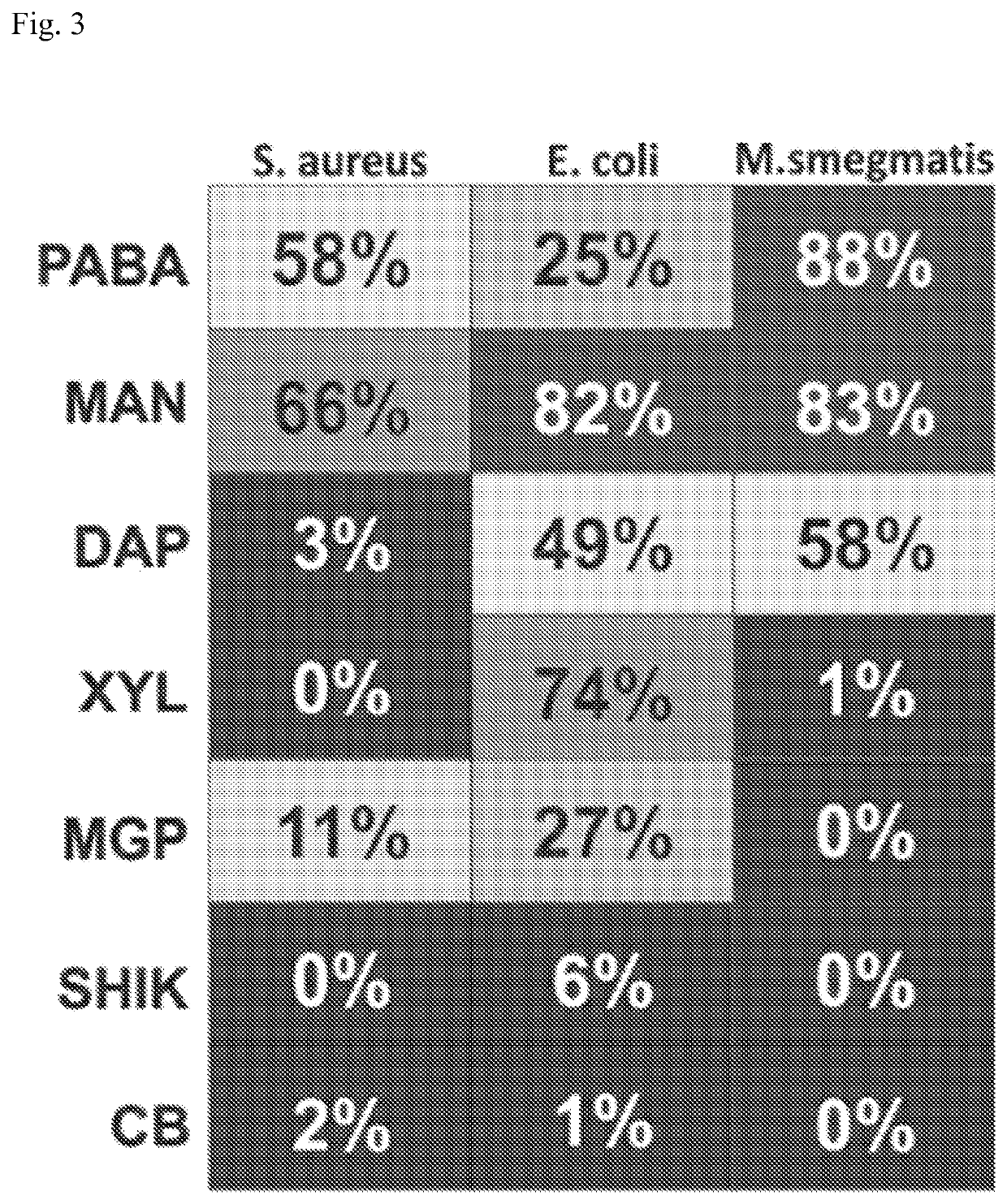Bacteria-specific labeled substrtates as imaging biomarkers to diagnose, locate, and monitor infections
a microorganism and imaging biomarker technology, applied in the field of microorganism and microorganism culture, can solve the problems of inability to diagnose infectious diseases using standard diagnostic tools, inability to perform brain biopsies or biopsies in patients with bleeding risk, and inability to perform brain biopsies or biopsies
- Summary
- Abstract
- Description
- Claims
- Application Information
AI Technical Summary
Benefits of technology
Problems solved by technology
Method used
Image
Examples
example 1
[0104]Seven (3%) compounds (FIG. 2) passed all 3 selection criteria; of these 1 was a known substrate for TK similar to FIAU (which also validated the screen), while the remaining 6 compounds were novel and tested for intracellular bacterial accumulation in model bacteria representing three important pathogen classes: Staphylococcus aureus (gram-positive), Escherichia coli (gram negative), or Mycobacterium smegmatis (mycobacteria). Intracellular uptake assays were performed at least in triplicate and indicate the percent of the total radioactivity (added to the culture), that was found in the bacterial pellet (after several steps of washing) (FIG. 3). Heat-killed bacteria were used as negative controls and no uptake was noted in any species. Intriguingly, some compounds were taken up differentially by the 3 different species of bacteria (e.g. XYL for E. coli alone, DAP for E. coli and M. smegmatis) indicating that the present inventive imaging methods can identify other bacterial sp...
example 2
[0105]A mycobacterial lead compound (PABA) was also evaluated in Mycobacterium tuberculosis and demonstrated significant (96.3% at 18-hours) and rapid (32.9% at 2-hours) accumulation. No significant accumulation was noted in host-cells (J774 macrophages) at the corresponding time-points, indicating that the uptake is bacteria-specific (FIG. 4A). Moreover, addition of excess unlabelled tracer blocked accumulation of M. tuberculosis-associated activity, indicating that PABA uptake was saturable and specific (FIG. 4B). PABA uptake was also measured in S. aureus and E. coli cultures and was also saturable and specific (FIG. 4C).
example 3
[0106][14C] D-mannitol was another of the promising molecules identified by the methods of the present invention. It accumulated rapidly and in significant amounts in all three models bacteria tested. Intracellular uptake was 66%, 82% and 83% in S. aureus, E. coli and M. smegmatis respectively after only 2 hours of incubation (FIG. 3). No uptake was observed in heat killed bacteria. Moreover, uptake in macrophage-like cells (J774) and Human Brain Microvascular Endothelial Cells (HBMEC) was <5% uptake at 2 hours.
PUM
| Property | Measurement | Unit |
|---|---|---|
| concentrations | aaaaa | aaaaa |
| incubation time | aaaaa | aaaaa |
| time | aaaaa | aaaaa |
Abstract
Description
Claims
Application Information
 Login to View More
Login to View More - R&D
- Intellectual Property
- Life Sciences
- Materials
- Tech Scout
- Unparalleled Data Quality
- Higher Quality Content
- 60% Fewer Hallucinations
Browse by: Latest US Patents, China's latest patents, Technical Efficacy Thesaurus, Application Domain, Technology Topic, Popular Technical Reports.
© 2025 PatSnap. All rights reserved.Legal|Privacy policy|Modern Slavery Act Transparency Statement|Sitemap|About US| Contact US: help@patsnap.com



